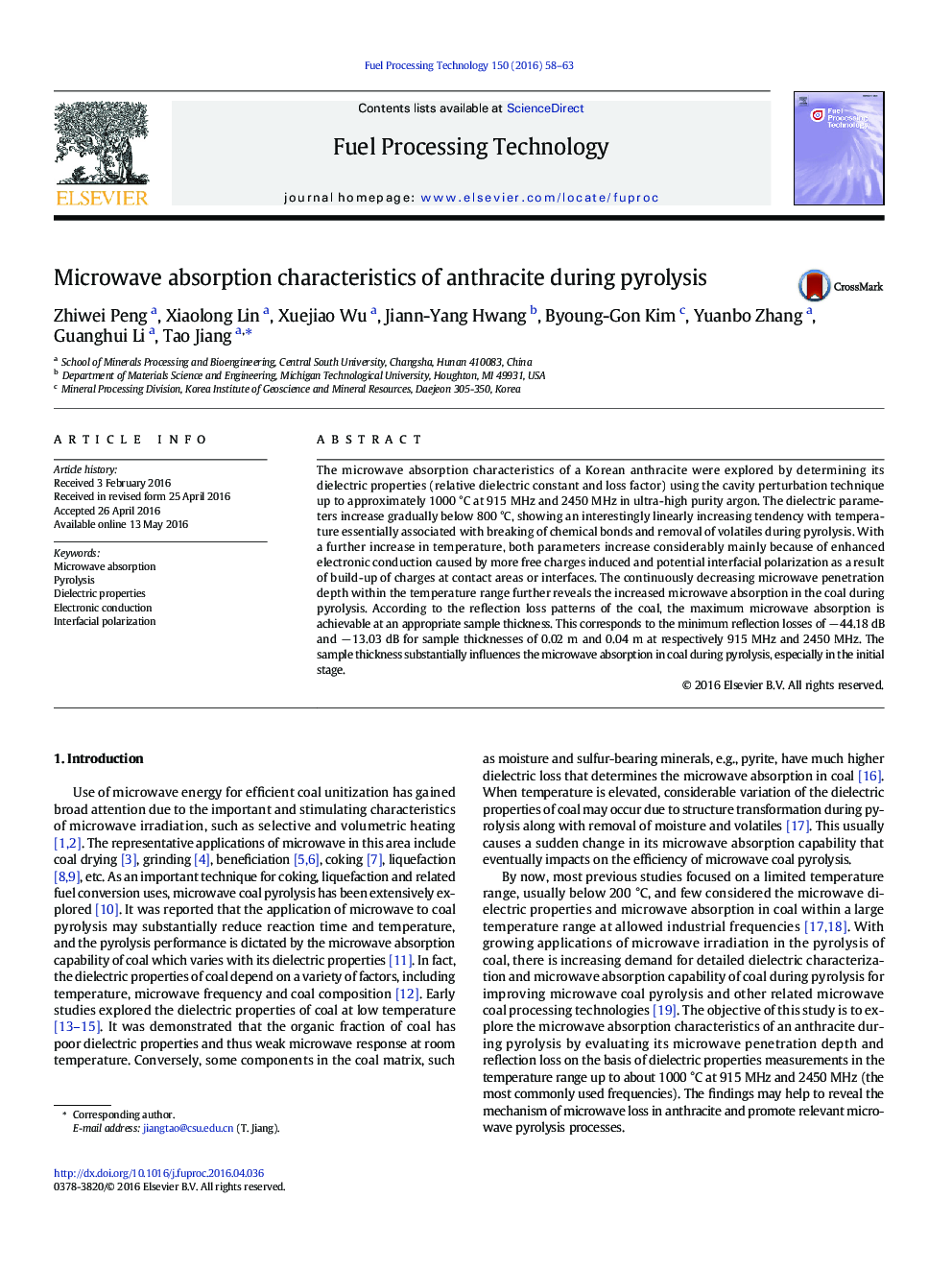| کد مقاله | کد نشریه | سال انتشار | مقاله انگلیسی | نسخه تمام متن |
|---|---|---|---|---|
| 209117 | 461655 | 2016 | 6 صفحه PDF | دانلود رایگان |
• Dielectric parameters of anthracite increase linearly with increasing temperature.
• Microwave absorption capability of anthracite rises markedly as pyrolysis proceeds.
• Sample thickness impacts more on wave absorption in the initial stage of pyrolysis.
The microwave absorption characteristics of a Korean anthracite were explored by determining its dielectric properties (relative dielectric constant and loss factor) using the cavity perturbation technique up to approximately 1000 °C at 915 MHz and 2450 MHz in ultra-high purity argon. The dielectric parameters increase gradually below 800 °C, showing an interestingly linearly increasing tendency with temperature essentially associated with breaking of chemical bonds and removal of volatiles during pyrolysis. With a further increase in temperature, both parameters increase considerably mainly because of enhanced electronic conduction caused by more free charges induced and potential interfacial polarization as a result of build-up of charges at contact areas or interfaces. The continuously decreasing microwave penetration depth within the temperature range further reveals the increased microwave absorption in the coal during pyrolysis. According to the reflection loss patterns of the coal, the maximum microwave absorption is achievable at an appropriate sample thickness. This corresponds to the minimum reflection losses of − 44.18 dB and − 13.03 dB for sample thicknesses of 0.02 m and 0.04 m at respectively 915 MHz and 2450 MHz. The sample thickness substantially influences the microwave absorption in coal during pyrolysis, especially in the initial stage.
Journal: Fuel Processing Technology - Volume 150, September 2016, Pages 58–63
